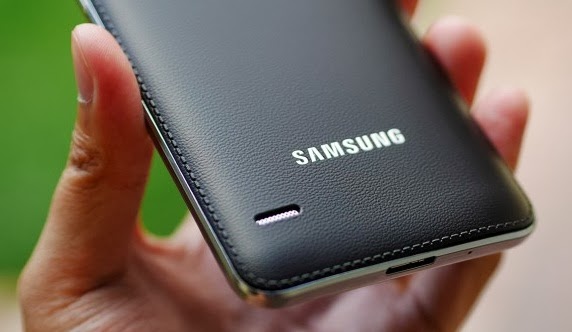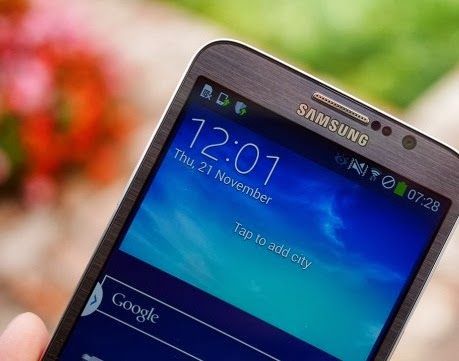The Samsung Galaxy Round launched on October 10 as the first smartphone with a curved display, a title that Samsung narrowly snagged from bitter local rival LG.
It’s safe to say that the Round was not what most of us expected from flexible display technology, after Samsung teased it for years as a game changing feature. That’s because the Round is more of a proof of concept than a real attempt to make curved smartphones a mass-market success. It’s a first milestone on a road that we’ll eventually take us to new form factors, that are, for now, on a distant horizon.
But even if the Round is not the game-changer we’ve been hoping for, it’s still a really interesting device. It comes with top of the line specs and all of Samsung’s software features, but also with a price tag to match. Should you buy it, provided you can get your hands on one? Is the Round worth the investment, curved screen aside? Join us as we find out in our Samsung Galaxy Round review.
While the Round lacks the S Pen that would make it a member of the Note family, it’s still obviously inspired by the Galaxy Note 3, which is visible in its size and design. The device is as tall and wide as the Note 3, and just a little thinner, though you probably won’t feel the 0.4 millimeters difference. What you may notice is that the Round is 14 grams lighter than the Note 3, possibly thanks to the plastic substrate of the display, which is lighter than Note’s conventional glass.
You get the classic Samsung layout on the Galaxy Round: a physical home button flanked by capacitive menu and back keys on the front, the power button on the right, and the volume rocker on the left. The removable back plate is made of the textured plastic that Samsung introduced on the Note 3, which gives it great grip and a nice feel in hand. While the faux stitching is probably an unnecessary embellishment, we like the leathery texture of the Round, and it’s definitely a welcome step away from the glossy plastic that marked Samsung’s high-end devices in the past couple of years.
The soft, comfortable texture of the faux leather is enhanced by the device’s signature curved profile. The phone just feels nice in hand following the contour of your palm, even if it’s such a large device. The sides of the phone are slightly thinner than the center, and much of the weight of the Round is concentrated in its middle. That makes it self-balancing, which is important for the tilt-actioned software features that Samsung equipped the phone with.
Overall, the curvature of the Galaxy Round doesn’t change the user experience in a significant way. This feels like a “normal” phone, more so than the rival LG G Flex, which is curved from top to bottom. Especially if you know the Note 3, you will feel right at home on the Round.
Samsung managed to equip the Galaxy Round with a Full HD display, which is notable because the LG G Flex comes with a 720p screen, even if it’s larger. The 5.7-inch AMOLED panel on the Round is as good as anything that Samsung has put on the market so far – we noticed no differences between the glass-based Note 3 and the plastic-based Round, which is a major achievement for Samsung.
Being so subtle, the curvature of the display doesn’t distort images in any way, and, once you turn the phone on, you will quickly forget that the screen is curved. Look at it directly, and the Round looks exactly like any regular flat design. The only time you might notice a difference is when you see reflections on the screen, which are distorted and made smaller by the concave sheet of glass.
Watching movies and playing games is a pleasure on this beautiful 386 ppi screen. Like any modern AMOLED device, the Round is bright, has beautiful colors, and deep blacks. If you are put off by the oversaturate colors, you can set the phone to a more realistic color profile from the phone’s settings.
In terms of usability, the curved display does make it somehow easier to reach the screen with your thumb, but do keep in mind that this is a large phone that’s designed primarily for two-hand use.
We have to give Samsung credit for not making any compromises when it comes to the Galaxy Round’s specifications. At the core of the phone, there’s a powerful Snapdragon 800 system on a chip from Qualcomm, comprising of four Krait 400 CPU cores clocked at 2.3GHz and an Adreno 330 GPU. The Round is one of the select few devices to feature 3GB of RAM, along with Samsung’s Note 3 and the Note 10.1 (2014).
This combination of hardware makes the phone fly through the user interface, though we feel it would be even faster with a simpler OS instead of TouchWiz. That extra RAM comes in handy when using Samsung’s signature MultiWindow multitasking mode, as well as when loading games and large media files.
There’s 32GB of storage by default, and you can extend that with the microSD card slot found underneath the removable back plate. You also get the bells and whistles that Samsung launched on the S4 and carried over on the Note 3, including air gestures, an IR blaster, and sensors for temperature and atmospheric pressure. You might not need all of these features, but you’ll appreciate having at least some of them. All things considered, the lack of the S Pen is the only difference between the Round and the Note 3.
We had no qualms over the call quality and the phone’s speakers are adequately loud, though fidelity goes down as you pump up the volume.
The battery inside the Round is elongated, to accommodate the phone’s curvature, but it’s still a conventional removable unit. At 2,800 mAh, it’s smaller than the Note 3, but we think most users won’t be affected by it. On average, the Round should be good for two days of light usage, and, even if you are a heavy user, your phone will not shut down before the end of your workday. Even better, the unit we reviewed came with an extra battery and a special charger for it.
The Galaxy Round comes with the same camera module that Samsung uses on the Galaxy S4 and the Note 3. In other words, it’s a competent, high-quality camera loaded with software features, but lacking optical image stabilization or other special technologies.
The app is fast and the shutter is responsive, which is good for the moments when you whip out your smartphone in a hurry to capture a passing moment. If you’re willing to spend a little more time navigating the settings and various camera modes, you get a wealth of features that you can use creatively, such as dual shot, shot and sound, burst mode, drama mode, and erase mode.
Even if you’re not into Samsung’s little software features, the Round still provides a great camera experience. Images are crisp and color reproduction is excellent in most cases, though you might encounter problems in lower light or with fast moving subjects.
Just like with hardware, in terms of software the Galaxy Round is a consummate Samsung flagship. TouchWiz may be getting long in the tooth for some, but no one can deny that’s a feature rich implementation of Android. Samsung’s unique additions include touchless controls and the Premium Suite, including a nice multiwindow multitasking feature that takes advantage of that expansive screen. Just like with the hardware, you might not need all the stuff that Samsung threw in there, but you may find some feature or another very useful; even if you don’t, you can blissfully ignore everything that is non-essential.
The Round comes with a couple of unique software features that take advantage of its curved shape. When placed on a flat surface, you can tilt the device to a side to see any notifications or to skip tracks when you are listening to music. It’s a neat little trick, but in most cases, it’s simpler and faster to use air controls for the same task. We covered the tilt features of the Galaxy Round in more detail here.
The Galaxy Round is a very limited release, and Samsung has expressed no intention to make it available outside South Korea. You can get it unlocked from specialized retailers though, if you’re willing to pay a premium for the privilege of owning such a rare piece of kit.
As with the LG G Flex, it’s definitely not worth buying the Galaxy Round for its shape alone, because the curved screen doesn’t really change the way you use the phone. Yes, it has a nice wow factor, but that tends to wear off after a while, or even turn into an annoyance. However, even if you ignore the curve, the Round is a great phone – you get high-end hardware, a beautiful screen, long battery life, and an excellent camera, just to name its biggest qualities.
Watch the video:
red:Androidauthority



















Post a Comment